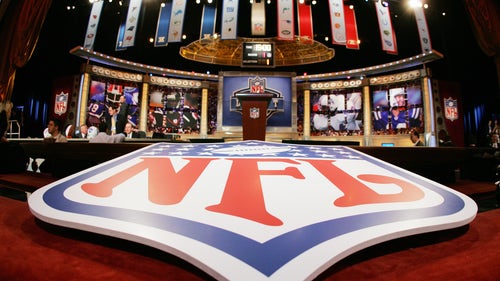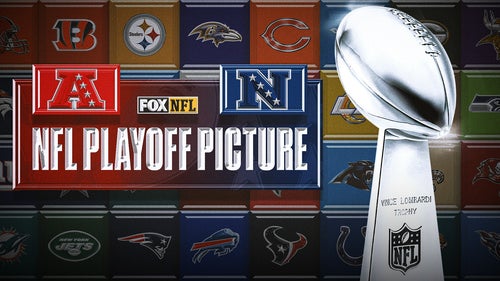
How good will Dallas Cowboys QB Dak Prescott be after his injury?
By Dr. Matthew Provencher
FOX Sports Injury & Performance Analyst
An eventful NFL offseason continued Monday afternoon, when news broke that the Dallas Cowboys had agreed to a massive new contract with quarterback Dak Prescott.
It was for four years and up to $164 million, with $126 million guaranteed. And it led to all sorts of interesting questions, such as:
- Are the Cowboys a better Super Bowl bet?
- Who won the deal?
- Is this the best contract ever?
The big question now, after Prescott's 2020 season was derailed by a nasty ankle injury, is what kind of player he'll be when he returns.
Although the Cowboys don't appear to be worried, it's fair to look at the situation and analyze what Prescott faces in the months ahead and what kind of player he'll be when he returns to action.
Let's take a look.
What was the nature of Prescott’s injury?
It was Game 5 against the New York Giants when Prescott sustained what is called an ankle fracture-dislocation. It was likely a small open injury, which means bone fragments broke through the skin.

Dak Prescott of the Dallas Cowboys is carted off the field after sustaining a leg injury against the Giants during the third quarter on Oct. 11, 2020.
The ankle joint is made up of several bones: The top and sides of the joint are the tibia and fibula, and the bottom is the talus. The ankle fracture-dislocation usually breaks the tibia and the fibula bones so that the joint is "dislocated" out of the socket.
The key to managing this kind of injury is quickly setting the fracture, then stabilizing it with plates and screws. Sometimes this type of injury can result in cartilage damage in the joint, which could impact performance down the road.
What does recovery look like?
Recovery is divided into several phases, and that is where a team's medical staff must truly shine. Physical therapists work in conjunction with athletic trainers, acupuncture therapists and eventually strength and conditioning experts in a multidisciplinary approach. Here's how it breaks down:
Phase 1 (0-6 weeks after surgery): Crutches and gentle range-of-motion efforts to preserve motion in the joint, wake up the muscles in the calf and keep swelling down.
Phase 2 (6-12 weeks after surgery): It's time to start increasing the range of motion in the ankle and foot. The athlete will be weaned to one crutch, and then the joint undergoes progressive loading with light weights and squats. X-rays ensure that everything is lined up properly. There is work to strengthen the muscles with rubber bands, and then weighted exercises are key.
Phase 3 (12-20 weeks after surgery): This is when strength and conditioning should begin. In addition to testing the joint with increasing weight work and plyometrics, a key thing is what we call proprioception, which means the body and mind know exactly what position the joint is in without looking at it. This is crucial, as it allows athletes to produce rapid adjustments to their joints while on the field without thinking about it. Think of how important that could be for Prescott's mobility.
Phase 4 (20-28 weeks after surgery): This is a broad estimate, but it's roughly when the player should be able to resume full NFL activities, including working on agility, cutting and other turf activities to get into football shape. Once cleared by the medical staff to enter this phase, Prescott can really start to ramp up his activities.
What type of performance should we expect when Prescott returns?
This is tricky because there are several factors in play.
First, you have a significant ankle injury to a quarterback who is normally very mobile. Prescott is an exceptional player with quick feet to elude pressure within the pocket and the athleticism to avoid defenders outside of it. The data shows that an injury such as this usually causes an 11% decline in performance the first two years following the injury.
But you also have the mental aspect to consider. Prescott is resilient and super tough, and I expect that he will prove to be an outlier in this case.
How will the injury impact Prescott's career?
There is no denying that Prescott endured a significant injury, but I expect that because of the prompt and high-quality treatment he received, the ankle bones will heal well, and he can go on to a long career in the NFL.
The one thing to watch, as mentioned earlier, is that cartilage damage could have a long-term effect, known as "Post-Traumatic Arthritis," in the ankle joint. This does not show up right away, but Prescott might find himself dealing with swelling and/or pain in the joint at the end of a long day of practice or a game. This can be managed but is something to watch.
Should the Cowboys have committed so much money?
Although this is a serious injury, I don't have any problem with the Cowboys committing to their quarterback. There is no reason Prescott shouldn't be able to have a solid career, even if there is an initial decrease in performance upon his return. It might take some time and patience, but Prescott stands to make a solid and sustained recovery.
What role does a team’s medical staff play in advising on signing players after injuries?
The medical staff’s first priority is the health of the player and ensuring access to cutting-edge and proven medical care.
However, the staff does advise coaches and ownership on how much practice a player can handle while recovering and when a player is ready to return to action. There is a careful set of checks and balances in the Collective Bargaining Agreement (CBA), and players always have the right to seek second medical opinions on these matters.
In my experience, team medical staffs do an outstanding job of taking great care of the players, ensuring their autonomy in decision-making and providing them the data they need to make decisions.










